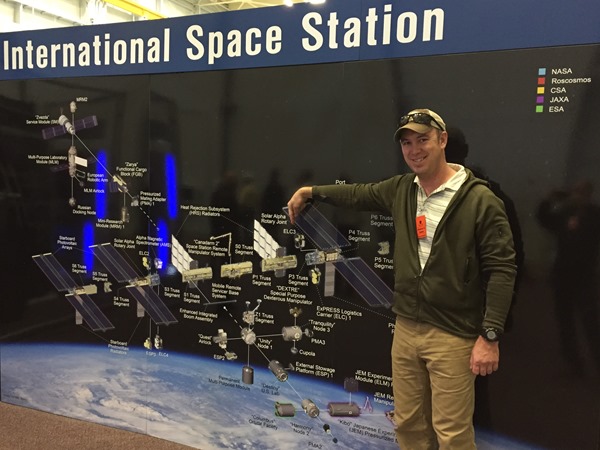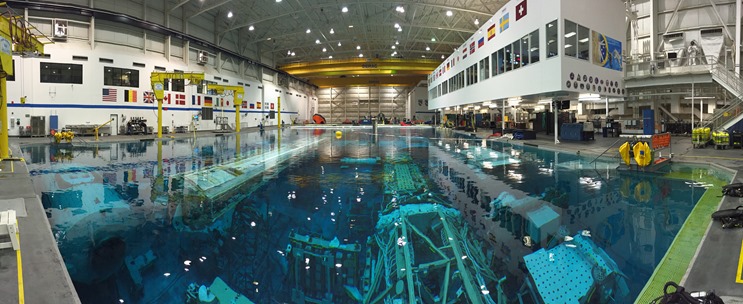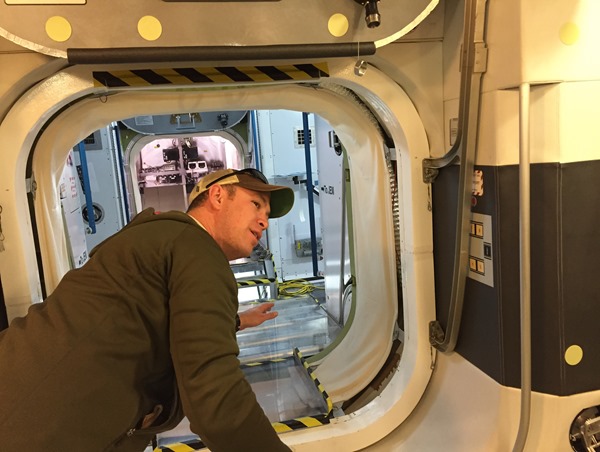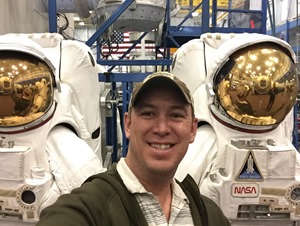 Every job has its ups and downs. In my own career at LASP, I’ve experienced tremendous success as the Flight Controller for the SORCE satellite launch in 2003, which was then followed by the horrible tragedy when the Glory satellite failed to reach orbit in 2011. And last year, I was completely awed when I witnessed firsthand the launch of the STP-Sat3 satellite with our TCTE instrument on board. TCTE is still successfully collecting solar irradiance data along with SORCE, but to ensure that we maintain the solar irradiance data record for years to come, we’ve been hard at work on the follow-on to SORCE and TCTE that is called TSIS.
Every job has its ups and downs. In my own career at LASP, I’ve experienced tremendous success as the Flight Controller for the SORCE satellite launch in 2003, which was then followed by the horrible tragedy when the Glory satellite failed to reach orbit in 2011. And last year, I was completely awed when I witnessed firsthand the launch of the STP-Sat3 satellite with our TCTE instrument on board. TCTE is still successfully collecting solar irradiance data along with SORCE, but to ensure that we maintain the solar irradiance data record for years to come, we’ve been hard at work on the follow-on to SORCE and TCTE that is called TSIS.
The Total and Spectral Solar Irradiance Sensor (TSIS) has been under development by LASP since 1998, and I’ve been involved with the program for the past 10 years. Originally, TSIS was slated to fly on the NPOESS satellite as early as 2013 but was left without a ride to space for 4 years following the cancellation of the bloated NPOESS program in late 2009. Despite numerous efforts during that time to hitch a ride to space, it wasn’t until my return from the Grand Canyon in February of this year that the decision was made of how to get TSIS into space. Based in part on studies that I conducted, NASA and NOAA decided that TSIS will fly on the ISS starting in August of 2017.
The International Space Station (ISS) has been orbiting the Earth since 1998 when it first began to be assembled like a huge, white Tinker Toy set. All of the individual modules for habitation, experimentation, and infrastructure were completely installed in 2010, with the resulting structure becoming the most expensive thing humans have ever built at $150B and the largest ever in space with dimensions the size of a football field.
Since the decision was made back in February, my professional life has been utterly transformed as I’ve stepped into the leadership role to design, build, and test the pointing system that will allow the TSIS instruments to fly on the ISS. The pointing system is more formally known as the Thermal Pointing System (TPS), since it also provides a stable thermal environment for the TSIS instruments and is quite similar to the TPS that I helped develop on the Glory project. But compared to the Glory TPS, the new design for the ISS is significantly larger in size and must satisfy a dizzying array of requirements to ensure the TSIS instruments will be able to successfully collect their data from the ISS. The result of this additional complexity and my additional leadership responsibilities is that the past 10 months have been a non-stop series of technical and programmatic challenges that have left me exhausted and looking forward to the day that I can watch in live, high-definition as TSIS and the TPS are installed onto the exterior of the ISS in an exquisitely choreographed series of maneuvers by the robotic arm.
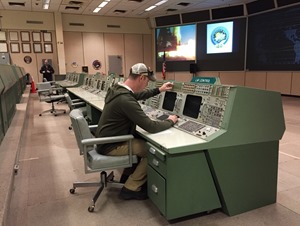 So when I travelled to Houston in early December for a safety review of TSIS by NASA’s team of ISS engineers and it seemed the meetings and nitty-gritty work would never end, I was in the perfect position for an inspirational pick-me-up. Much to my satisfaction at the conclusion of the meetings, our LASP TSIS team along with our counterparts from NASA and NOAA were given a behind the scenes tour of Johnson Space Center (JSC). In popular culture, JSC is probably best known as the mission control center that the Apollo 13 astronauts talked to when they uttered their infamous words, “Houston, we have a problem.”
So when I travelled to Houston in early December for a safety review of TSIS by NASA’s team of ISS engineers and it seemed the meetings and nitty-gritty work would never end, I was in the perfect position for an inspirational pick-me-up. Much to my satisfaction at the conclusion of the meetings, our LASP TSIS team along with our counterparts from NASA and NOAA were given a behind the scenes tour of Johnson Space Center (JSC). In popular culture, JSC is probably best known as the mission control center that the Apollo 13 astronauts talked to when they uttered their infamous words, “Houston, we have a problem.”
During our tour, we got to visit that same control center, sit in the chairs where the Gemini and Apollo controllers sat, and ponder everything that transpired in the recently designated national historic site. More pertinent to our current TSIS work, we walked just down the hall to mission control for the ISS. Since it is a 24×7 working site, we peered into the control center through a glass wall like visitors at a zoo watching zebras and giraffes. Having been on the other side of the glass in LASP’s mission operations center, I was able to relate to both the monotony and the significance of the work that was transpiring in the large room with dozens of desks and massive displays that showed live video from the ISS, the orbit track over the Earth, and health & safety data that is telemetered from the ISS back to the control center. And all the while, I imagined what it will be like in August of 2017 to be sitting in that room watching TSIS being installed on the space station.
In addition to seeing the real ISS experience from the ground side of things, we were also treated with seeing what it looks like from the astronauts side of things. JSC has two life-size, high-fidelity mockups of the ISS that are used for astronaut training.
This first site we visited is called the Neutral Buoyancy Laboratory (NBL) and is designed to replicate the exterior environment of the ISS for astronaut training purposes. The NBL is a massive (202’ long by 102’ wide by 40’ deep for 6.2 million gallons of water) indoor pool that contains realistic replicas of the all the ISS external structures where the astronauts could perform Extra-Vehicular Activities (EVA, aka space walks) for repair and maintenance reasons. The structure includes the main truss (although it is segmented into two parts since the pool isn’t as long as the truss), all of the crew modules (habitats, laboratories, etc.), the visiting vehicles (Soyuz, Dragon, etc.), and, most interesting to our TSIS team, the Express Logistic Carriers (ELCs).
The ELCs sit like ears on the ends of the main truss and provide external mounting locations complete with data and power connections for scientific and experimental payloads. While many of the ELC payloads are short to medium term experiments, TSIS will be the first long-term (5-7 years), operational scientific instrument designated to fly on an ELC. With all the work we’ve been doing over the past year regarding the countless details associated with being an ISS payload, it was an amazing site to look down into the NBL pool and see actual ELCs with payload mockups in the water amid a stream of bubbles. And when the bubbles cleared, the blue water revealed the unmistakable white suits of astronauts training around the same structure where TSIS will soon sit which made our team’s connection to the US space program amazingly clear.
This other site we visited is called the Space Vehicle Mockup Facility and is designed to replicate the interior environments of the ISS for astronaut training purposes. Inside the facility are life size replicas of every interior module that astronauts use to practice on-orbit operations and responses to emergencies. Our group was fortunate to be able to enter several of the modules to experience the next closest thing to being an astronaut on the ISS, and I even managed to disable gravity for moment in my mind allowing me to float weightlessly.
When the tour was finally complete, being able to see behind the scenes of NASA at JSC was an inspirational highlight to my job that put into perspective all the work that the TSIS team and I are doing to contribute to our nation’s prestigious space program.
The photo album below includes a bunch of fun photos from the tour of NASA JSC. Enjoy!

